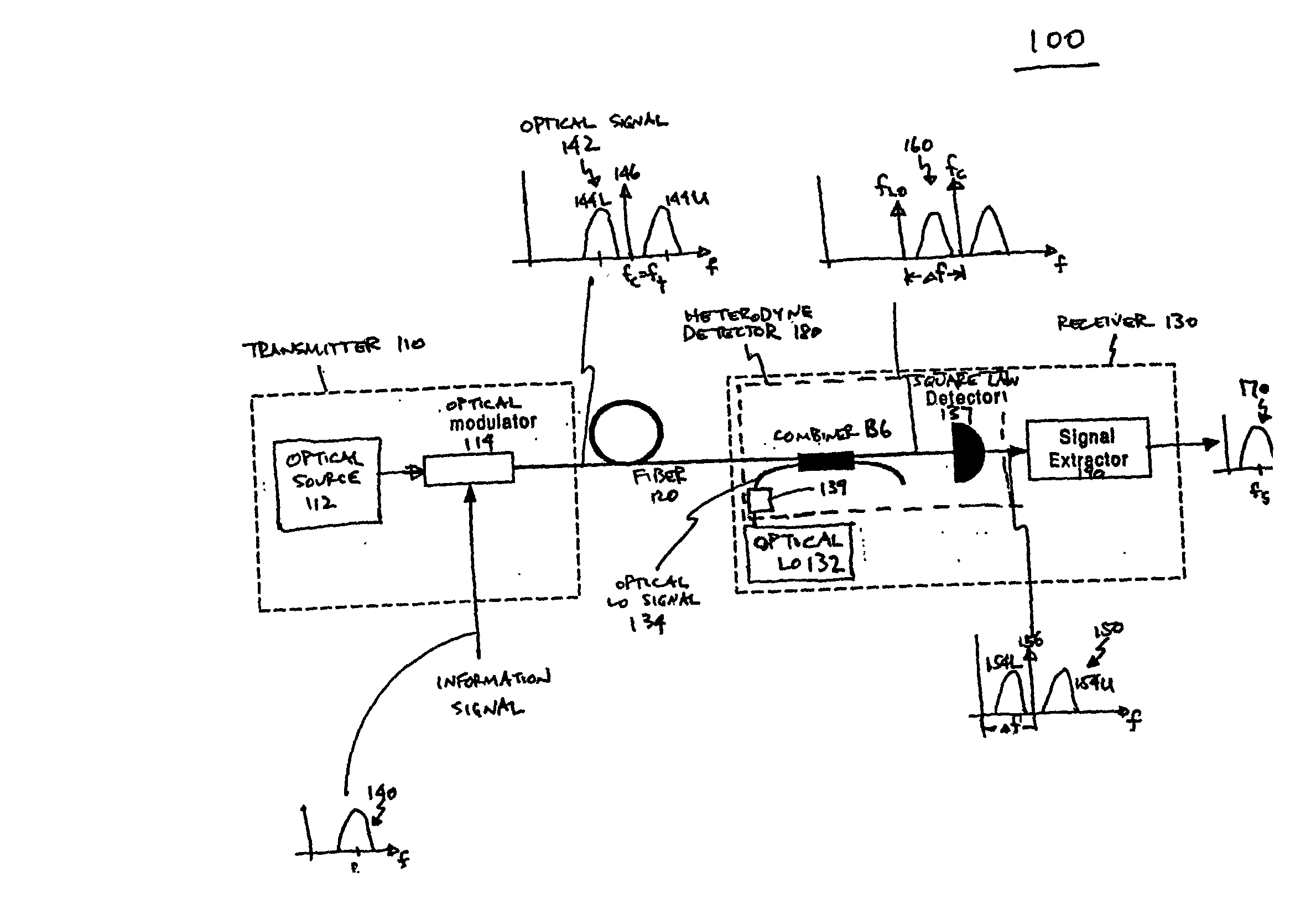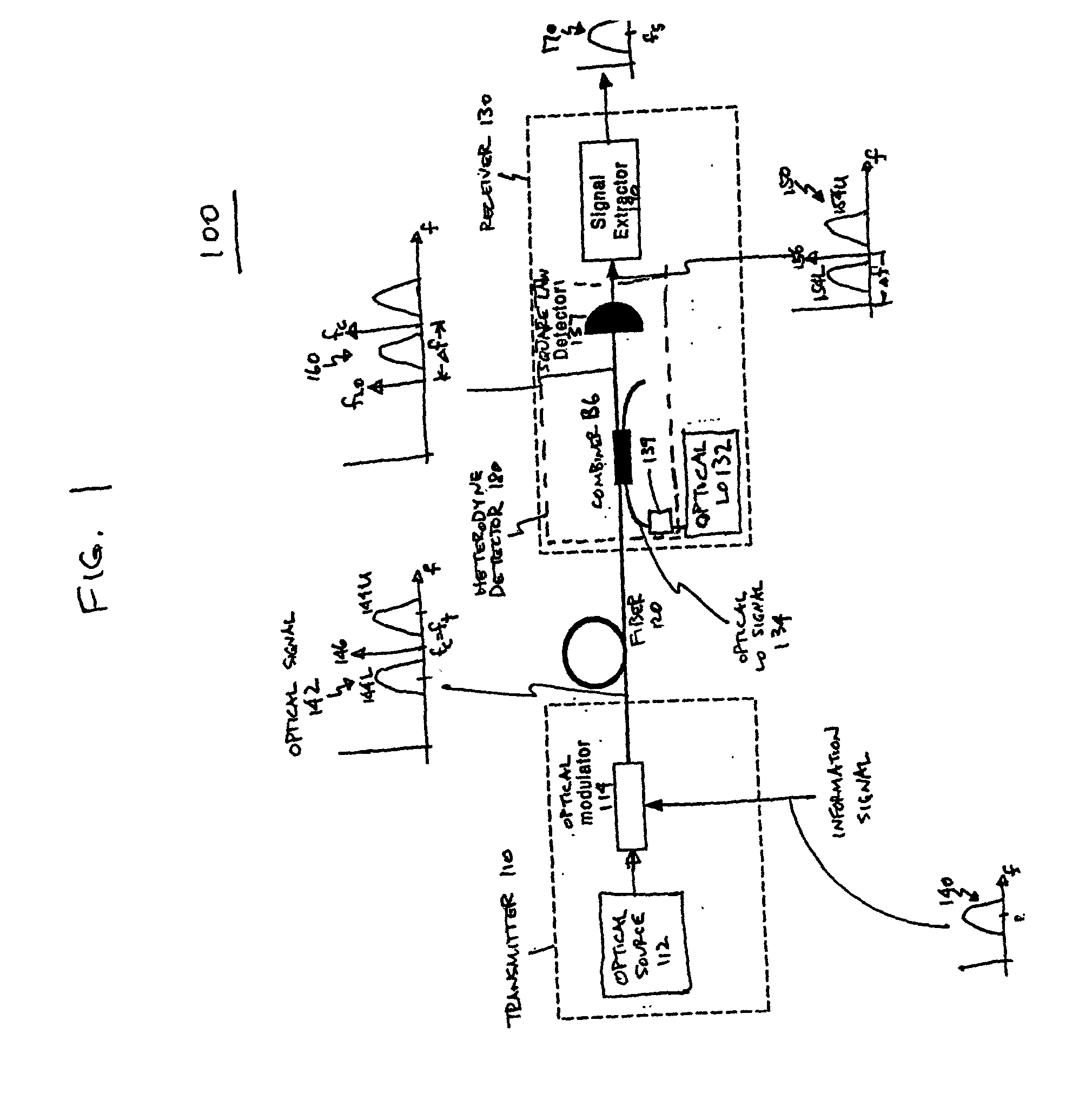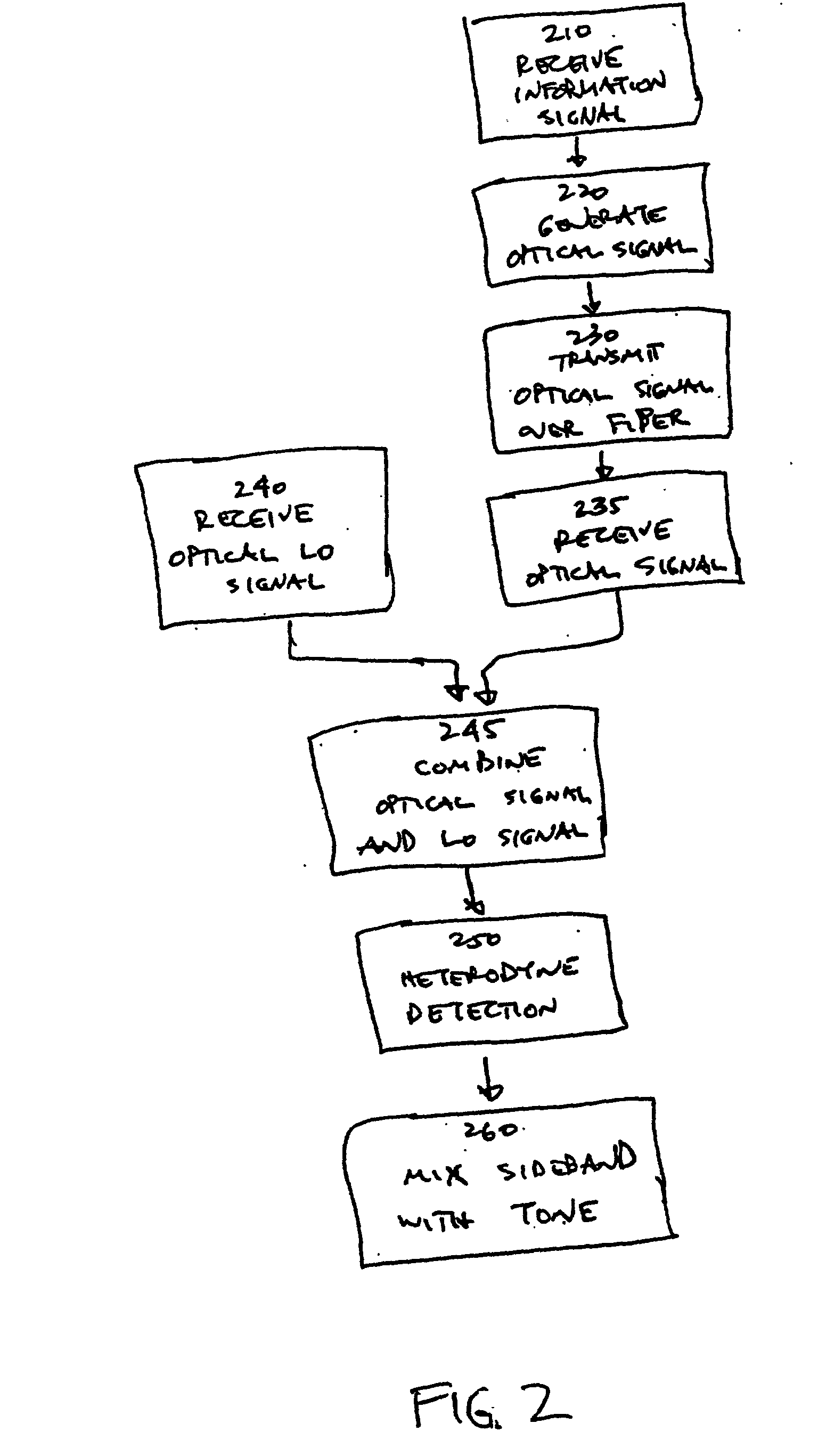Optical communications using multiplexed single sideband transmission and heterodyne detection
a technology of optical fiber communication and heterodyne detection, applied in the field of optical fiber communication, can solve the problems of further intensifying this demand, and limiting the performance and/or utility of current optical fiber systems
- Summary
- Abstract
- Description
- Claims
- Application Information
AI Technical Summary
Benefits of technology
Problems solved by technology
Method used
Image
Examples
Embodiment Construction
includes two extraction paths 850A and 850B, and a combiner 860. Each extraction path 850 receives the incoming electrical signal 150 and is coupled on the output side to combiner 860.
[0079] Each extraction path 850 processes a different sideband within the electrical signal 150 to recover information signals 140A and 140B, respectively. As an example, extraction path 850A might process the upper sideband 154U; whereas extraction path 850B processes the lower sideband 154L. Both extraction paths 850 may use the same tone (e.g., the optical carrier) in their processing, or they may use different tones. Combiner 860 receives the recovered information signals 140A and 140B and constructively combines them to produce a resultant difference component 140C, which contains the original information signal. The difference components 140A and 140B typically may be phase shifted with respect to each other in order to align their phases before they are combined; the amount of the phase shift ma...
PUM
 Login to View More
Login to View More Abstract
Description
Claims
Application Information
 Login to View More
Login to View More - R&D
- Intellectual Property
- Life Sciences
- Materials
- Tech Scout
- Unparalleled Data Quality
- Higher Quality Content
- 60% Fewer Hallucinations
Browse by: Latest US Patents, China's latest patents, Technical Efficacy Thesaurus, Application Domain, Technology Topic, Popular Technical Reports.
© 2025 PatSnap. All rights reserved.Legal|Privacy policy|Modern Slavery Act Transparency Statement|Sitemap|About US| Contact US: help@patsnap.com



